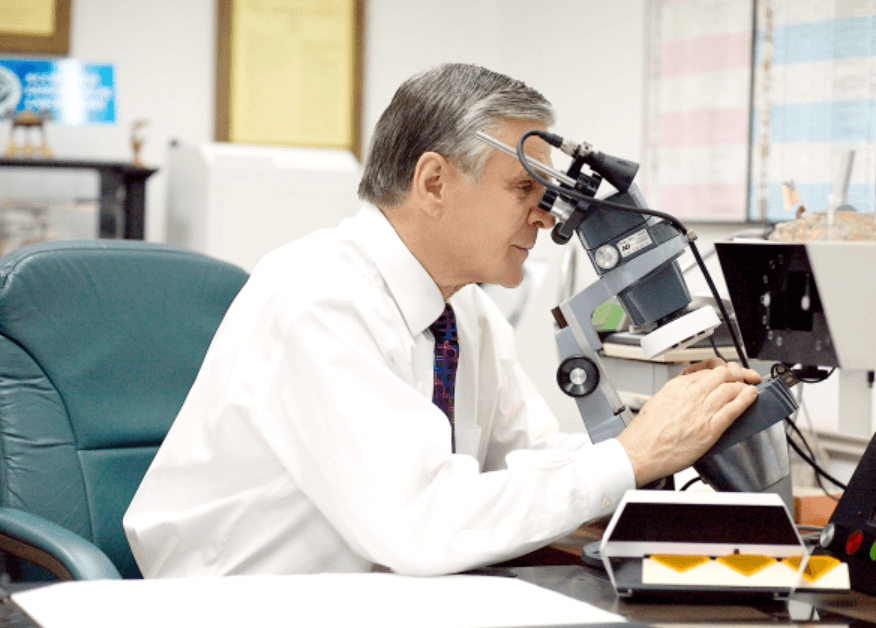
Exploring the UV-VIS Spectrometer: A Vital Instrument in Modern Analytical Science
In the vast world of laboratory instrumentation, the uv-vis spectrometer has earned a permanent place on benches across academic, industrial, and research labs. Known for its exceptional ability to provide fast and accurate measurements of absorbance, concentration, and even reaction kinetics, the uv-vis spectrometer is a cornerstone of modern spectroscopic analysis.
Despite advancements in more complex instruments like ICP-MS or FTIR, the uv-vis spectrometer remains one of the most trusted, affordable, and accessible tools for quantitative and qualitative analysis. This article delves into the functionality, applications, advantages, and selection tips for the uv-vis spectrometer, along with industry trends and maintenance guidelines.
What is a UV-VIS Spectrometer?
A uv-vis spectrometer is an analytical instrument used to measure the absorption of ultraviolet (UV) and visible (VIS) light by a sample. It operates over a typical wavelength range of 190 to 1100 nanometers and provides a spectrum that represents how much light is absorbed by the substance at each wavelength.
By applying the Beer-Lambert Law, absorbance data can be used to determine the concentration of analytes in a solution, assess chemical purity, or monitor the rate of chemical reactions.
How the UV-VIS Spectrometer Works
At its core, a uv-vis spectrometer uses a straightforward process that involves a light source, a monochromator, a sample holder, and a detector.
- Light Source: Two types of lamps are generally used—deuterium (for UV) and tungsten-halogen (for visible light).
- Monochromator: This selects specific wavelengths of light to be passed through the sample.
- Sample Holder: Typically a quartz or glass cuvette where the sample is placed.
- Detector: After light passes through the sample, the detector measures how much light is absorbed or transmitted.
- Software Display: Absorbance or transmittance data is calculated and displayed via dedicated software.
Depending on the model, the instrument may scan across multiple wavelengths or focus on a single wavelength for targeted measurements.
See also: Tunnel Radio Technology Advancements for Underground Mines
Types of UV-VIS Spectrometers
The uv-vis spectrometer comes in several configurations, each suited to different analytical requirements:
🔹 Single Beam Spectrometer
- Measures light absorption through a single path (sample only).
- More affordable, suitable for educational or basic QC tasks.
🔹 Dual Beam Spectrometer
- Splits light into two paths: one through the sample and one through a reference.
- Offers better baseline stability and long-term accuracy.
🔹 Scanning UV-VIS
- Automatically scans across a range of wavelengths.
- Produces a full absorbance spectrum, ideal for identifying unknown compounds.
🔹 Portable/Handheld Models
- Compact and battery-powered, useful for field testing in water analysis, food inspection, and environmental monitoring.
Applications of UV-VIS Spectrometers
One of the greatest advantages of the uv-vis spectrometer is its wide array of applications across industries:
🧪 Pharmaceuticals
- Quantification of active pharmaceutical ingredients (APIs).
- Dissolution and stability studies.
- Quality control during drug manufacturing.
🌍 Environmental Testing
- Detects pollutants like nitrates, phosphates, and heavy metals in water.
- Monitors air quality by analyzing gas-phase contaminants.
🥫 Food and Beverage
- Measures color intensity and clarity of beverages.
- Detects additives, preservatives, and nutritional content.
🧬 Biotechnology and Life Sciences
- Quantifies nucleic acids (DNA, RNA) and proteins in biological samples.
- Evaluates enzymatic reactions and biomolecule purity.
⛏️ Mining and Metallurgy
- Assesses metal content in ores and processing fluids.
- Ensures compliance with mineral concentration specifications.
Advantages of Using a UV-VIS Spectrometer
The enduring popularity of the uv-vis spectrometer is backed by numerous benefits:
✅ High Accuracy
When calibrated correctly, the instrument delivers highly accurate measurements suitable for regulatory and research-grade work.
✅ Rapid Analysis
Most readings take only a few seconds, allowing high throughput and faster decision-making.
✅ Ease of Use
User-friendly interfaces, automated calibration, and intuitive software make it accessible to non-experts.
✅ Cost-Effective
Compared to more advanced spectroscopic equipment, a uv-vis spectrometer offers outstanding value for money.
✅ Non-Destructive
Most UV-VIS methods allow recovery and reuse of the sample, which is ideal for expensive or rare materials.
Choosing the Right UV-VIS Spectrometer
When selecting a UV-VIS spectrometer consider the following key factors to ensure a smart investment:
1. Wavelength Range and Resolution
Ensure it covers the spectral range your application requires (usually 190–1100 nm) and offers sufficient resolution for sharp peak detection.
2. Light Source Longevity
Check the expected life span of deuterium and tungsten lamps. Some modern spectrometers use LEDs with longer lifespans.
3. Bandwidth and Sensitivity
Lower bandwidths yield sharper spectral peaks. High sensitivity is critical for detecting low concentrations.
4. Software Compatibility
Look for instruments with compliance-ready software (e.g., 21 CFR Part 11), automated reporting, and connectivity with LIMS.
5. Sample Throughput
High-volume labs may need models with autosamplers and multiple cuvette positions to improve efficiency.
Maintenance Tips for UV-VIS Spectrometers
Proper maintenance ensures consistent performance and extends the lifespan of your uv-vis spectrometer:
- Clean Cuvettes Regularly: Prevent contamination that may distort absorbance.
- Replace Light Sources Promptly: Follow manufacturer guidance for lamp replacement intervals.
- Update Software: Periodic software updates enhance features and fix bugs.
- Keep Optics Dust-Free: Use protective covers and clean the instrument environment.
- Run Calibration Checks: Regularly verify instrument performance using certified reference materials.
The Future of UV-VIS Spectroscopy
As digital transformation and miniaturization continue to reshape analytical science, the uv-vis spectrometer is also evolving:
- Cloud-Enabled Devices: Remote access, data sharing, and real-time monitoring are becoming common features.
- AI Integration: Smart algorithms help interpret spectra and flag abnormal results.
- Green Instrumentation: Eco-friendly designs reduce energy consumption and support sustainable lab practices.
- Modular Upgrades: Flexible systems allow labs to scale functionality as needed.
These innovations ensure the uv-vis spectrometer remains relevant in a rapidly advancing analytical landscape.
Top Manufacturers of UV-VIS Spectrometers
Several reputable manufacturers dominate the uv-vis segment. These include:
- Shimadzu
- Thermo Fisher Scientific
- Agilent Technologies
- PerkinElmer
- Drawell – An emerging player offering dependable instruments at cost-effective prices, especially suitable for developing labs and educational institutions.
Always evaluate the supplier’s technical support, training options, and regional service availability before purchasing.
Final Thoughts
The uv-vis spectrometer is more than just a laboratory tool—it’s a versatile workhorse that supports scientific discovery, product safety, and environmental protection across the globe. With the ability to deliver quick, reliable, and cost-effective analysis, it continues to hold its place in the modern analytical arsenal.
Whether you’re conducting DNA purity checks in a biotech lab or analyzing dye concentrations in industrial processes, a well-chosen uv-vis spectrometer can become one of your most valuable assets.




